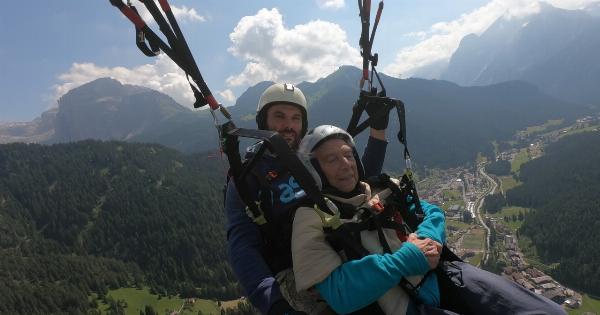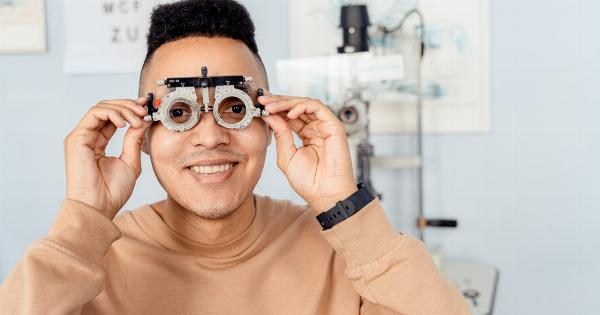A concussion is a type of traumatic brain injury that occurs when a blow to the head or body causes the brain to jolt or shake within the skull.
This sudden movement can lead to temporary loss of normal brain function and result in a wide range of symptoms.
Concussions in Young Patients
Concussions can happen to anyone, but young patients are particularly susceptible due to their developing brains.
According to the Centers for Disease Control and Prevention (CDC), children and adolescents are more likely to sustain a concussion and take longer to recover compared to adults.
Signs and Symptoms of a Concussion
Recognizing the signs and symptoms of a concussion is crucial in identifying and treating this condition in young patients. Some common symptoms include:.
1. Headache
A persistent headache or pressure in the head is a common symptom of a concussion. Young patients may complain of a headache that worsens during physical activity or mental exertion.
2. Nausea and Vomiting
Feeling nauseous or vomiting can also be indicative of a concussion. If a young patient experiences frequent or persistent nausea after a head injury, it is important to seek medical attention.
3. Dizziness and Balance Issues
Concussions can cause a sense of dizziness or unsteadiness. Young patients may have difficulty maintaining balance, stumble, or feel like the room is spinning.
4. Sensitivity to Light and Noise
A heightened sensitivity to light and noise is another potential symptom of a concussion. Young patients may find bright lights or loud noises overwhelming and may prefer a dark and quiet environment.
5. Changes in Vision
Concussions can affect a person’s vision. Young patients may experience blurred vision, double vision, or difficulty focusing on objects.
6. Cognitive Symptoms
Concussions can impact cognitive functioning. Young patients may have trouble with memory, concentration, and have a slower thought processing speed.
7. Sleep Disturbances
Changes in sleep patterns can be a sign of a concussion. Young patients may have trouble falling asleep, staying asleep, or experience excessive fatigue.
8. Mood Swings and Emotional Changes
A concussion can cause emotional and behavioral disturbances in young patients. They may experience irritability, sadness, anxiety, or changes in their overall mood.
9. Loss of Consciousness
While loss of consciousness is not always present in concussions, it can occur in some cases. If a young patient loses consciousness, even briefly, it is important to seek immediate medical attention.
10. Slurred Speech
Slurred speech or difficulty finding the right words can be a sign of a concussion. Young patients may exhibit speech abnormalities following a head injury.
Diagnosing a Concussion in Young Patients
Diagnosing a concussion in young patients involves a comprehensive evaluation. A healthcare professional, such as a pediatrician or neurologist, will assess the patient’s symptoms, medical history, and perform a physical examination.
Imaging Tests
In some cases, imaging tests such as a CT scan or an MRI may be recommended to rule out any other head injuries or complications.
Treatment and Management
Once a concussion is diagnosed, treatment and management focus on rest and gradual return to normal activities. In young patients, it is crucial to allow ample time for recovery before resuming sports or other physical activities.
Monitoring for Complications
It is essential to closely monitor young patients for any potential complications following a concussion. This can include worsening symptoms, severe headaches, repeated vomiting, seizures, or changes in behavior.
If any concerning signs arise, immediate medical attention should be sought.
Return-to-Learn and Return-to-Play Protocols
Young patients should follow return-to-learn and return-to-play protocols to ensure a safe and gradual reintroduction to their academic and physical activities. These protocols involve step-by-step progression under medical supervision.
Preventing Concussions in Young Patients
Prevention is key when it comes to young patients and concussions. Some measures that can help reduce the risk of concussions include:.
1. Wearing Protective Gear
Ensure young patients wear appropriate protective gear during sports and recreational activities, such as helmets, mouthguards, and padding.
2. Teaching Proper Techniques
Proper techniques and rules should be taught and enforced in sports to reduce the risk of high-impact collisions and head injuries.
3. Creating Safe Environments
Ensure the environments where young patients play or participate in activities are safe. This includes proper maintenance of playgrounds, removal of potential hazards, and supervision when needed.
4. Educating Young Patients and Parents
Young patients and their parents should be aware of the signs, symptoms, and risks associated with concussions. This education can help identify and manage concussions promptly.
The Importance of Identifying Serious Concussions
Identifying serious concussions in young patients is crucial to prevent further injury or complications. While most concussions resolve with time and proper care, some cases may require specialized treatment and intervention.
Conclusion
Concussions can have significant effects on young patients, and the identification of serious concussions is of utmost importance.
By recognizing the signs and symptoms, seeking prompt medical attention, and implementing preventive measures, the well-being and long-term health of young patients can be safeguarded.





























